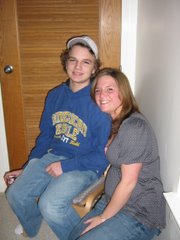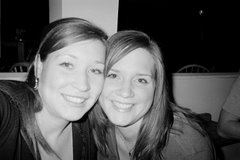Now that I have read Joyful Noise, I'm beginning to like poetry, as I did when I was younger. Although I'm the type of person that likes things to be neat and tidy (and poems to rhyme), I really enjoyed this book. It took some imagination and determination to read each poem because I don't have another voice. It is a very interesting and fun way to read and write poetry.
My favorite part of this book of poems was the personification of the insects. I felt like they were
 humans talking to me instead of bugs. I think the Book Lice (pictured at left) were the funniest of all the "characters". They were telling me a love story, how they met and what they loved about each other and how they get along even though they have differences. It was cute and sweet (I don't think I'm supposed to use those words, but that's exactly how I felt). It was like an older couple recalling their first meeting and how their lives are just so complete (Think: When Harry Met Sally, all the couples sharing their stories).
humans talking to me instead of bugs. I think the Book Lice (pictured at left) were the funniest of all the "characters". They were telling me a love story, how they met and what they loved about each other and how they get along even though they have differences. It was cute and sweet (I don't think I'm supposed to use those words, but that's exactly how I felt). It was like an older couple recalling their first meeting and how their lives are just so complete (Think: When Harry Met Sally, all the couples sharing their stories).I did have a few other thoughts, and maybe someone who did read this with two voices could help me. In the poems, there were several instances where both "voices" had lines to read simultaneously, but they were different words. I was thinking, would you be able to hear each of them or would the words blend together? If it did blend, do you think that was the intention of Fleischman? (Here I go again: trying to analyze what the author was thinking!) What kind of mood did that create in the poem?




5 comments:
You asked, "Would be able to hear each of them or would the words blend together? If it did blend, do you think that was the intention of Fleischman?" My husband and I read some of the lines together to answer exactly that question. When I read the poems, I wondered if the audience would be able to understand what was being said.
We had to practice a couple of times to get our timing right, but you can understand each speaker. The words don't mush together; they stand out. I don't know how Paul Flesichman ever figured out what words to use so that they worked together so well, but he did.
I read these poems with my ten year old daughter. It was sooo much fun. We were laughing out loud at our mistakes. When we first started with the ones where you speak simultaneously but, say different words it was sort of like trying to rub your tummy and pat your head at the same time. It took a little practice to get the hang of. And, to answer your question, yes, we could hear what the other was saying. It was probably the reason we had trouble at first. I have never experienced poetry like this. It adds so much to the shared experience. It Includes everyone. Both people are active participants. Fleishman also has a book of poetry for four voices. Since there are four people in our family I think when Sarah is old enough to read we will try it as a family.
By the way, our favorite poem was also Book Lice. And you are right it was cute ans sweet.
I also found it hard to read Joyful Noises by myself. In order to help me put two voices to the poetry, I had a student practice reading "Grasshoppers" with me, and then we opened up our daily read aloud by reading it to the class, where I followed the poetry with a feature of a bug themed story to coincide with our insect and garden critter studies. I have talked to my students all semester about how I am taking a class on children's literature, and I have been sharing appropriate selections with them and discussing my reactions as well. I explained to the class that I thought this selection of poetry was interesting because this book really lent itself to only be read aloud, and read aloud with a partner. After the student and I read "Grasshoppers" twice (because the first time through we tripped up where lines were read at the same time, but were each worded differently.) The students were actually kind of interested that I had trouble with it! I then put two sets of two in the "Buddy Book" section of the classroom library as a weekly feature, and I found kids practicing every day, reporting to me that it was not as easy as it looked, but I know by their faces that they liked the challenge!
I was thinking about When Harry Met Sally too! I was even going to comment on it when I started reading your post, but then you did instead. As for reading them together, I read them with another person and felt like when we clashed with words, we were actually sounding like insects. It's almost like if we combine our words, we can make theirs.
Post a Comment